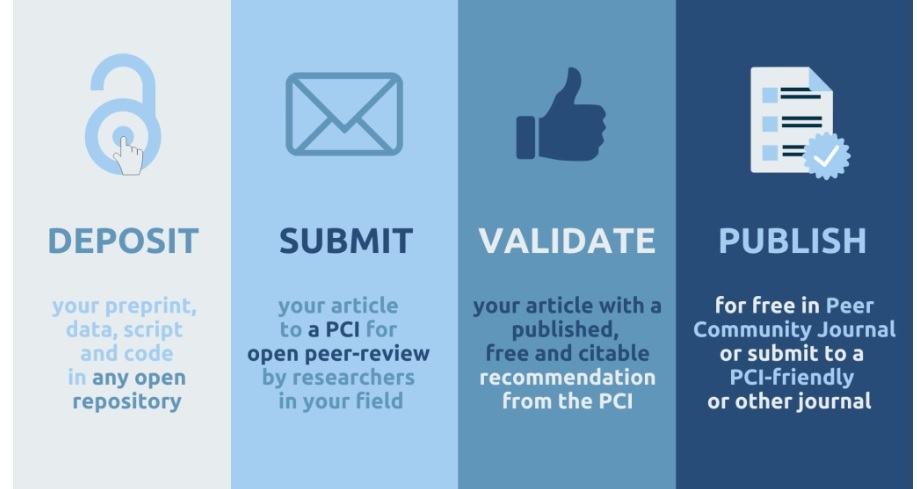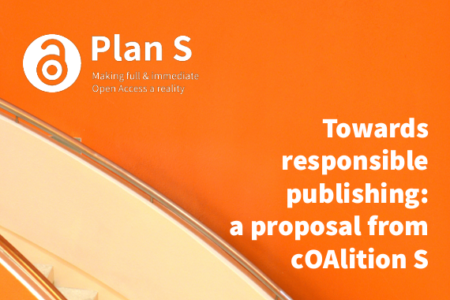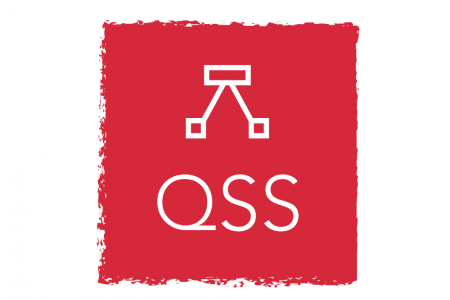Open Access Week 2022: will you help to open the scholarly debate?
Open digital infrastructures can facilitate the academic discourse, change the academic publication process, make scholarly communication into a dialogue for all.
The basis of scientific progress is scholarly discourse. Since the introduction of the world wide web, digital infrastructures have evolved that can help us to make the publication process more open, transparent, and interactive.
In the 2022 Open Access Week, we want to take the opportunity to look beyond just making the final publication open access and explore how these infrastructures can improve the heart of science: facilitate the academic discourse, truly change the academic publication process, and make scholarly communication into a dialogue for all.
Current scholarly communication process (and disadvantages)
Currently, publishing a peer reviewed article is still the default in scholarly communication. Despite its important role in determining what gets published and what does not, however, the peer review process itself is generally not transparent and it does not provide an opportunity for a public scientific discussion, as publishers do not make a manuscript open access while is still undergoing peer review. Based on the referee reports of a small number of anonymous independent experts, an editor decides what to do with an article: reject it, ask for adjustments, or accept it directly. For authors and readers, the role of an editorial board is often not clear: no one knows how decision-making took place and what adjustments were made based on the editor's recommendations. We would like to highlight some initiatives directed towards opening this process.
Examples of publishers opening the process: Copernicus, Elife
More than 10 years ago, the innovative open access publisher Copernicus demonstrated that publishing the manuscript and opening the peer review process can be a successful model.
Pöschl U (2012). "Multi-stage open peer review: scientific evaluation integrating the strengths of traditional peer review with the virtues of transparency and self-regulation". Frontiers in Computational Neuroscience. 6: 33. doi:10.3389/fncom.2012.00033
Copernicus strives for a strict, but fair and transparent peer-review. The publications offered are immediately publicly posted (and always remain accessible); the reports can be anonymous, but are always public; finally, anyone can respond to the generally constructive criticism. The first version of the publication also has a Digital Object Identifier (DOI), and comments are immediately publicly available to everyone. Based on the comments a decision is made whether the article will be finally published (possibly after modifications), always including the referee reports and discussions. Open or public peer review is therefore not only transparent for author and reader, but it also gives credit to the referees for their contribution to the scientific process.
Recently ELife announced the same sort of review process and at the same time launched the term Reviewed Preprint, a public journal-style paper containing the authors’ manuscript, the journals’ assessment, and the peer reviews. The author has the power to decide whether a Reviewed Preprint becomes a final published version or remains a Reviewed Preprint that can be updated in the future.
Scientific Publishing: Peer review without gatekeeping
Scientific Publishing: Peer review without gatekeeping
Peer review initiatives independent of a journal
In the examples above, the preprint, the referee reports and the journal are still strongly tied, but we also see an increasing number of platforms that are set up to review preprints independent of a journal.
Examples of these services are:
- Peer Community In (PCI) (2016) “a free recommendation process of scientific preprints based on peer reviews”
- Review Commons (2012) “empowers authors by providing them with a Refereed Preprint and facilitating its submission to affiliate journals”. No costs for authors.
- (2012) “enables scientists to search for their publications or their peers publications and provide feedback and/or start a conversation anonymously.”

Peer Community In is a non-profit organization of researchers offering peer review, recommendation and publication of scientific articles in open access for free.
These new peer review initiatives detach the peer review from a journal and make use of preprints on preprint servers. In this model the first step is to publish your manuscript as a preprint on a preprint server. You can find more information on how you can do it in ‘A practical guide to preprints’. You can also consult the Directory of Open Access Preprints Repositories to find a suitable preprint server. After posting the preprint can be reviewed on one of the peer review platforms.
This model has several advantages:
- The preprint is open access
- The review is open access as well
- Reviewers can make themselves known and become authors of the peer review report with a dedicated DOI that can be referenced.
- The review is a publication with a DOI and can be cited and credited
- No costs are involved for the authors or the readers
- Article and review have an open (Creative Commons) license and can be reused
- Reviews can be added also years later when new insights appear
ASAPbio has published a non-extensive list of open peer-review platforms that can serve as an inspiration for researchers who want to start exploring open peer-review.
Conclusion
We should strive to create a publication culture in which peer review of a manuscript no longer depends on a one-time anonymous review by a very select number of reviewers, but becomes a part of a continuous and transparent process and academic debate.
By opening the process of academic publishing, more publications will be open access right from the start, authors and readers do not have to pay and all can contribute to the scholarly debate, even years later.
Open peer review of preprints can make a serious contribution towards a more transparent and sustainable scientific publication environment and deserves careful consideration from academic authors.
Note: this topic continues -- on 25th October, the report 'Preprints and open preprint review: a workshop on innovations in scholarly publishing' was posted online to describe the discussions on some innovations in the way academic findings are disseminated and evaluated, focusing on preprints and open preprint at the Dutch Open Science Festival, September 1st 2022.







